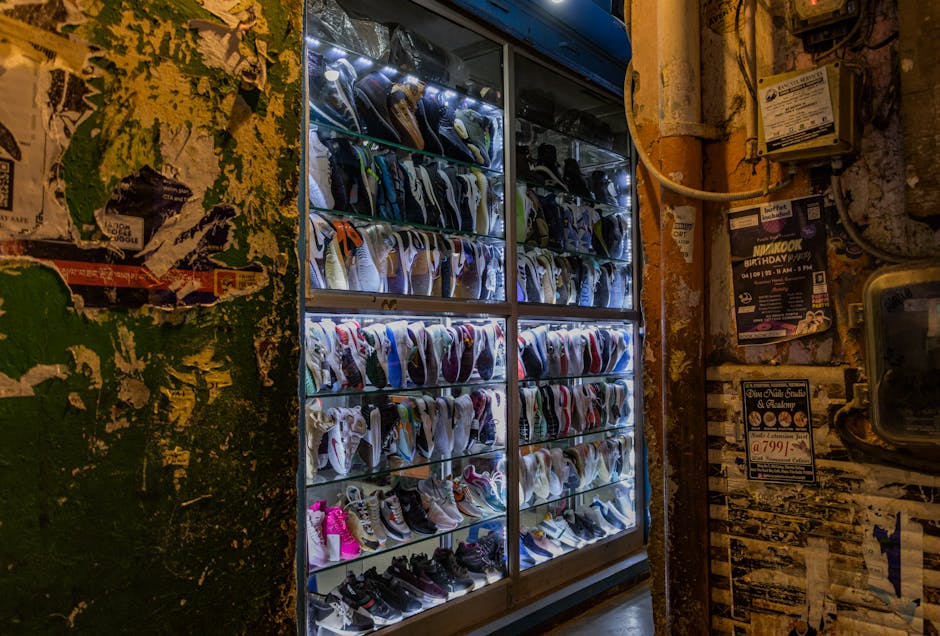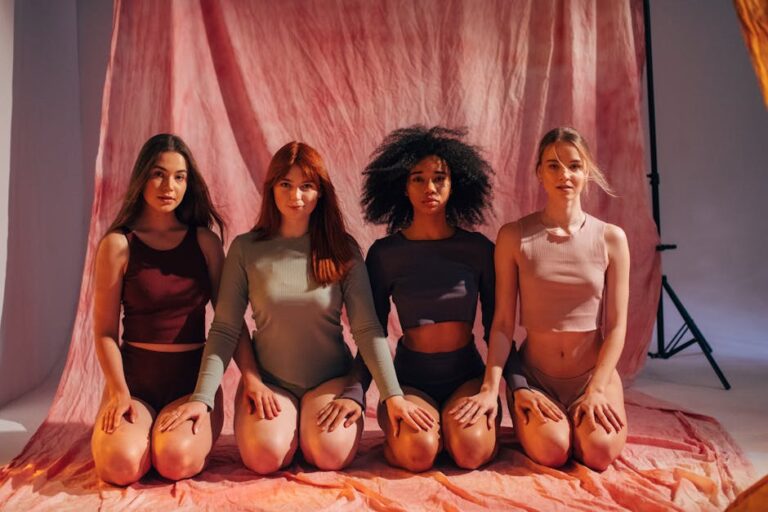Table of Contents
Right, pull up a chair. Get yourself a brew, or something stronger if it’s been one of those days. We’re gonna talk about the Nordic fashion game, or what passes for it, as we head into 2025. And let me tell ya, if you think it’s all still minimalist beige and sustainability sermons, you’ve been reading too many of those glossy mags.
Been in this rag trade longer than most of these Instagram whippersnappers have been alive. Seen trends come and go like buses on a rainy Tuesday in Glasgow – you wait for ages, then three turn up at once, all looking vaguely similar. And the Nordic lot? They’ve had a good run, haven’t they? For a while there, everyone, from the fancy pants in Mayfair to the struggling artists in Sydney, wanted that ‘Scandi cool’. Simple, clean lines, sensible fabrics, a bit of that hygge coziness thrown in for good measure. My daughter, she’s over in california, swore by it for a bit; said it was ‘effortless chic.’ Reckon she just liked not having to iron.
But here’s the thing about effortless: it takes a fair bit of effort to pull off consistently, especially when the world’s gone bonkers and everyone’s shouting about something new every five minutes. And for all the talk about Nordic fashion being some kind of serene, snow-dusted wonderland, the truth on the ground is a good deal grittier. It’s still about selling clothes, paying staff, and keeping the lights on. That ain’t no fairy tale, mate, it’s proper hard graft.
The ‘Scandi’ Look: More Than Just a Colour Palette?
Remember when everyone suddenly decided that black, white, and grey were revolutionary? Funny, that. Like nobody had ever considered them before. For years, ‘Nordic style’ conjured up images of beautifully tailored coats, chunky knits, and functional rain gear that actually looked good. It was sensible, built to last, and usually made of wool you could practically trace back to a specific sheep in Norway. They made a virtue out of practicality, which, honestly, felt like a breath of fresh air after years of fast fashion churning out tat you’d bin after two washes.
My old man, bless him, always said, “Buy nice or buy twice.” He was a Welshman, practical to a fault. And that sort of ethos always seemed to run through Nordic design. Less about fleeting fads, more about pieces that would stick around. You didn’t feel like you needed to toss it just because some hot new colour came along. Which, in theory, sounds great for the planet, doesn’t it?
But let’s be honest, that distinct aesthetic, while still present, has spread out a bit. It’s become a bit of a global default. Walk into any high street shop, even down in Dudley, and you’ll find bits and pieces that could be labelled ‘Nordic-inspired.’ Which is great for ubiquity, I suppose, but not so much for standing out. You start to ask yourself: if everyone’s doing it, is it still special? Is Nordic fashion still just minimalism and beige? Nah, not entirely. But the general public’s perception of it might still be stuck there. Brands are trying new things, a bit more colour, some bolder patterns, but it’s a slow turn. It’s like trying to get a supertanker to do a U-turn in the Tyne; it takes a while and a fair bit of effort.
The Greenwash Gauntlet: Who’s Really Clean?
Now, let’s get down to the dirty business of ‘sustainability.’ Every brand under the sun, from the smallest startup in Stockholm to the biggest conglomerate out of Paris, is yelling about how green they are. Half of it’s hot air, pure and simple. The Nordic brands, to their credit, were early adopters of this conversation. They talked about responsible sourcing, organic cotton, recycled materials, and fair wages long before it became a marketing buzzword. And some of them genuinely walk the walk. You’ll find small designers in places like Northumberland, tucked away, doing truly good work, making things ethically, locally.
But the industry’s expanded, hasn’t it? And with that comes the pressure to scale up, to produce more, to compete on price. That’s where things get murky. Are Nordic brands really as sustainable as they claim? Some are, undoubtedly. Others? They’re playing the game, just like everyone else. They’ll trot out a line about ‘circularity’ or ‘eco-friendly practices’ while still churning out collections at a clip that makes you wonder how exactly they’re squaring that circle.
It’s a tough spot, I get it. Consumers want ‘sustainable,’ but they often don’t want to pay the real cost of it. And making a garment, from field to factory to shop floor, without leaving a nasty footprint, well, that’s a Herculean task. I’ve seen enough supply chain reports to know that it’s a tangled mess, and most companies, Nordic or otherwise, are just trying to untangle one thread at a time. The real pioneers are the ones who are genuinely investing in new materials, new manufacturing processes, not just slapping a green leaf on the label.
Beyond the Design: Shifting Business models
The fashion world, bless its cotton socks, has always been a bit behind the curve when it comes to business innovation. Plenty of talk, not always a lot of action. But 2025, it feels like we’re finally seeing some movement, even in the more traditional corners of the Nordic scene.
One thing that’s picking up pace is the rental model. Why buy when you can borrow? For a special occasion, or even just to test out a look before you commit. It makes sense, particularly for higher-end pieces. And you see a lot of the established Nordic names, the ones that have been around forever, dipping their toes in this water. They’re finding that their well-made, durable garments are actually perfect for this kind of setup. You can wash ’em, repair ’em, send ’em back out without them looking like they’ve done ten rounds in a Welsh rugby scrum.
Then there’s resale. Not just eBay or vintage shops, but brands setting up their own platforms to sell pre-owned pieces. It’s a smart move. Keeps their brand in the loop, gives them a slice of the secondary market, and actually helps them promote that long-life, quality message. What’s new in Nordic fashion beyond just design? This is it. It’s the way they’re thinking about the whole lifecycle of the garment, not just the initial sale. It means they’re not constantly pushing out new stuff, which for some brands, particularly the smaller ones in places like Norfolk, is a godsend. It’s a way to keep revenue coming in without the relentless pressure of constant new inventory.
The Global Stage: Is the Novelty Wearing Off?
For a good decade or so, Nordic fashion was the darling of the international press. Every fashion editor, from New York to Tokyo, was waxing lyrical about Copenhagen Fashion Week. It was fresh, it was different, it felt authentic. They managed to make sensible look chic. And they showed the world you didn’t need to be draped in sequins to make a statement.
But things move fast, don’t they? Every year there’s a new ‘it’ city, a new ‘it’ style. Will Nordic fashion maintain its global appeal? That’s the million-dollar question, isn’t it? The buzz around the bigger shows is still there, for sure. They still pull in the crowds and the headlines. But the sheer volume of global fashion week content, the relentless churn, it makes it harder for any one region to hold onto that spotlight indefinitely.
I’ve heard talk, particularly from some buyers I know in Paris, that the aesthetic has become a bit… expected. Comfortable, yes. Reliable, absolutely. But maybe not as exciting as it once was. It’s a bit like a favourite band – you love their sound, but after a while, you start craving something new, a different riff. The challenge for these Nordic brands now is to keep that core identity, that quality and thoughtful design, but also to surprise people a bit. To remind the world why they loved it in the first place, and why it’s still relevant.
Money Talks: The Gritty Side of High Ideals
Let’s not kid ourselves. For all the talk of artistic expression and sustainable living, fashion is a business. A cut-throat, unforgiving business, at that. And the Nordic fashion scene, despite its polished exterior, is no different. We’re in 2025, and the economic climate in Europe, indeed across much of the globe, is still a bit choppy, like a North Sea ferry crossing in winter. Fuel prices, raw material costs, wages – they’re all climbing.
This hits the smaller, independent designers, the ones genuinely trying to do things ethically and locally, particularly hard. They don’t have the buying power of the big boys. They can’t squeeze their suppliers in the same way. It’s a constant tightrope walk. You want to pay your factory workers a decent wage, use quality fabrics that don’t destroy the planet, but then you’ve got to sell a jumper for three hundred quid, and who’s buying that when everyone’s feeling the pinch?
I was chatting with a young designer from Worcester not too long ago, trying to launch a sustainable menswear line. Kid was proper committed. Said he was going to source everything in the UK, pay above living wage. A noble aim, absolutely. But he was already knackered just trying to get enough orders to keep his head above water. It’s a tough gig. So, what does ‘slow fashion’ actually mean for a brand trying to stay afloat? It means being smarter, more efficient, and probably not trying to grow at a ridiculous pace. It means finding your niche, building a loyal customer base, and not chasing every single trend.
Digital Threads: Where Tech Meets Trousers
You can’t talk about any industry these days without someone droning on about ‘digital transformation’ or ‘AI.’ And yeah, the Nordic fashion houses are dabbling. They’re using more sophisticated data analysis to predict trends, manage inventory, and target customers. Nothing revolutionary there, everyone else is doing it too.
But where it gets interesting, particularly for the brands with a strong sustainability bent, is in areas like digital product passports. Imagine scanning a QR code on your new coat and seeing exactly where the wool came from, who spun it, who knitted it, even how much water was used. It’s not just a fancy gimmick; it’s about transparency. It’s a way to prove that you’re not just talking the talk when it comes to being green. This is where technology actually starts to serve a purpose beyond just selling more stuff faster.
And then there’s the metaverse, VR, all that jazz. Honestly, I’m still a bit skeptical about how much real-world impact that has on selling clothes. You can make a pretty digital dress, sure, but can you actually wear it to the pub? Probably not. It’s still early days for that sort of thing. I reckon the Nordic pragmatism will shine through here. They’ll probably pick and choose what actually helps them build their brand and sell well-made clothes, rather than chasing every shiny new toy.
The Long Game: Keeping It Real in a Hype-Driven World
So, looking ahead to the rest of 2025 and beyond, what’s the score for Nordic fashion? I believe they’ll keep their reputation for quality and thoughtful design. That’s embedded in their DNA, much like a good chip shop in Newcastle. It’s just how they do things. But the landscape around them is changing fast. The market’s more crowded, consumers are more cynical, and the cost of doing business is only going up.
They’re going to have to work harder to tell their story, to differentiate themselves beyond just a minimalist aesthetic. They need to show, not just tell, their commitment to responsible practices. It’s no longer enough to just say you’re sustainable; you need to prove it, with receipts, with genuine efforts to clean up the mess this industry creates.
The ones who thrive will be the ones who stay true to their core values – quality, functionality, good design – but also aren’t afraid to adapt. To explore new ways of selling, new materials, and new conversations with their customers. It’s about building a brand that lasts, that customers feel connected to, not just one that churns out the latest ‘must-have’ item.
Ultimately, like any good editor knows, it comes down to solid fundamentals. A well-constructed narrative, backed by facts, delivered with a bit of conviction. For Nordic fashion, that means well-constructed clothes, backed by real sustainability efforts, sold with an honest story. Anything less, and it’s just another fleeting trend in a world already awash with them. And honestly, we’ve all seen enough of those, haven’t we?












